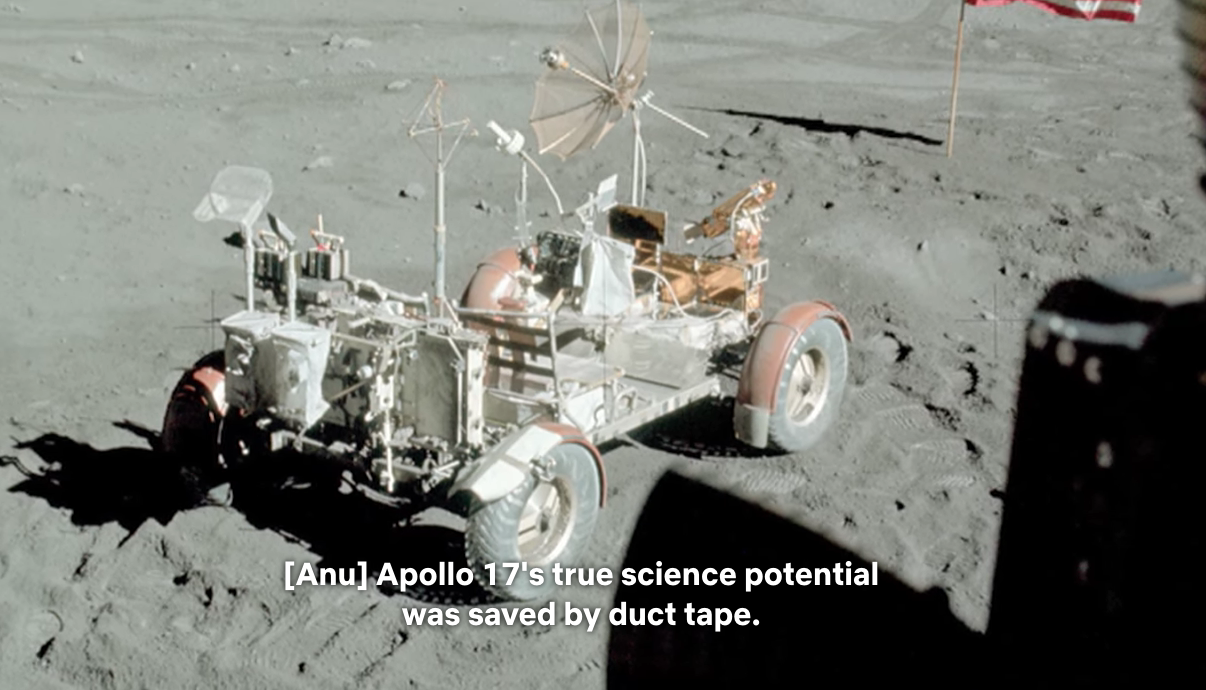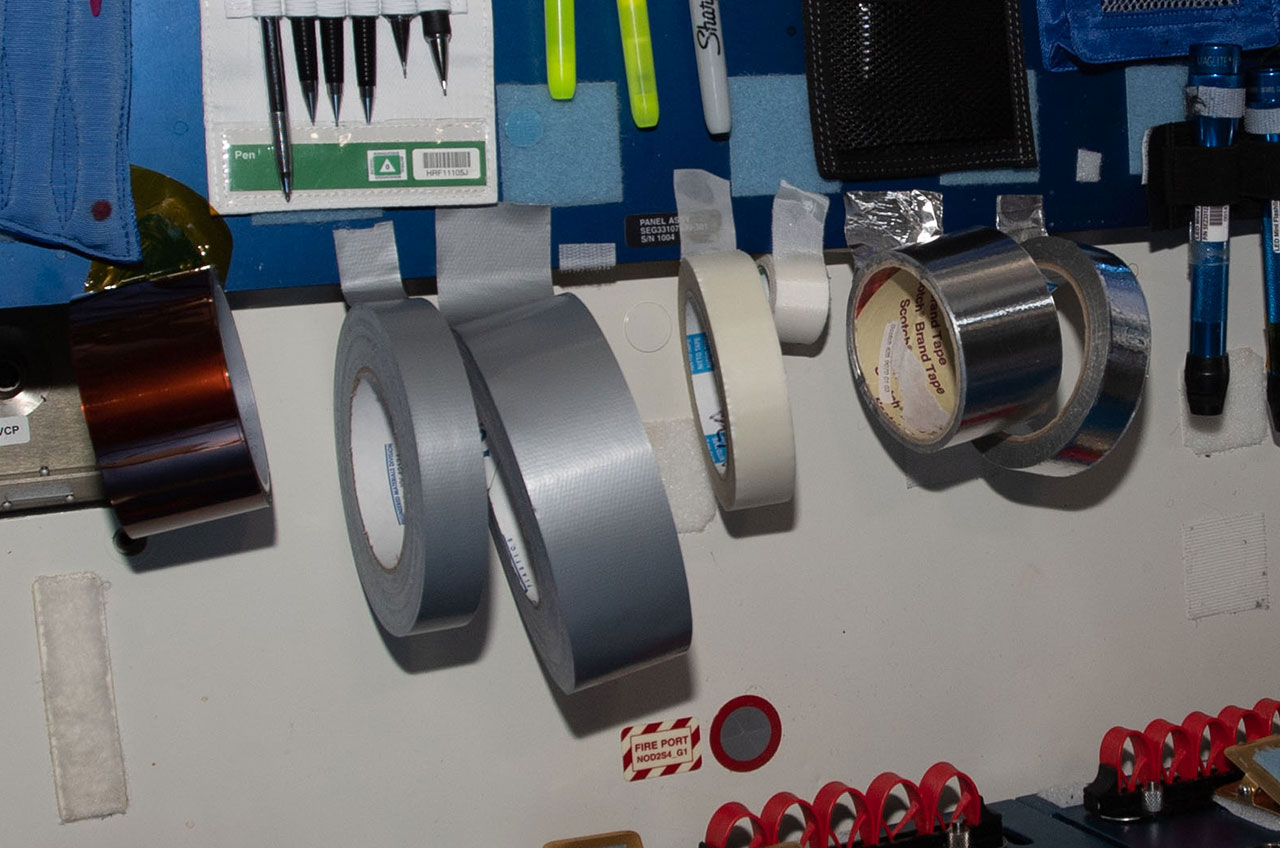Duct tape saves the day!
(in space)
(in space)
In 1965, during the Gemini 4 mission, astronaut Ed White used duct tape to secure a spare glove to his spacesuit. This allowed him to perform an unscheduled spacewalk and become the first American to "walk" in space.
During the Apollo 13 mission in 1970, an explosion occurred in one of the spacecraft's oxygen tanks, causing significant damage to the vessel. The explosion disabled the spacecraft's main power supply, which meant that the crew had to rely on backup systems to survive. The crew used duct tape to fashion makeshift carbon dioxide filters to remove carbon dioxide from the air, which was a vital component in maintaining breathable air inside the spacecraft. Without the duct tape, the crew would not have been able to survive the journey back to Earth.
During the Apollo 17 mission in 1972, one of the lunar rovers experienced a problem with its fender. The fender was designed to protect the rover from lunar dust and debris, and without it, the rover's wheels could have been damaged, putting the mission at risk. The astronauts used duct tape to secure the damaged fender, allowing the rover to continue on its mission and return safely to Earth.
During the Skylab 2 mission in 1973, the solar panel on the spacecraft became stuck and would not deploy fully, leaving the astronauts with limited power. They used duct tape and a makeshift pole to push the panel into place, restoring power to the spacecraft.
In 1990, the Hubble Space Telescope was launched into orbit with a flawed mirror that prevented it from focusing properly. A team of engineers on the ground developed a fix that involved using duct tape and other materials to create a new set of optics that could be installed during a spacewalk.
In 2015, British astronaut Tim Peake used duct tape to secure a loose panel on the treadmill aboard the International Space Station (ISS). Without the duct tape, the panel could have become a hazard to other equipment or the astronauts themselves.
During the Apollo 13 mission in 1970, an explosion occurred in one of the spacecraft's oxygen tanks, causing significant damage to the vessel. The explosion disabled the spacecraft's main power supply, which meant that the crew had to rely on backup systems to survive. The crew used duct tape to fashion makeshift carbon dioxide filters to remove carbon dioxide from the air, which was a vital component in maintaining breathable air inside the spacecraft. Without the duct tape, the crew would not have been able to survive the journey back to Earth.
During the Apollo 17 mission in 1972, one of the lunar rovers experienced a problem with its fender. The fender was designed to protect the rover from lunar dust and debris, and without it, the rover's wheels could have been damaged, putting the mission at risk. The astronauts used duct tape to secure the damaged fender, allowing the rover to continue on its mission and return safely to Earth.
During the Skylab 2 mission in 1973, the solar panel on the spacecraft became stuck and would not deploy fully, leaving the astronauts with limited power. They used duct tape and a makeshift pole to push the panel into place, restoring power to the spacecraft.
In 1990, the Hubble Space Telescope was launched into orbit with a flawed mirror that prevented it from focusing properly. A team of engineers on the ground developed a fix that involved using duct tape and other materials to create a new set of optics that could be installed during a spacewalk.
In 2015, British astronaut Tim Peake used duct tape to secure a loose panel on the treadmill aboard the International Space Station (ISS). Without the duct tape, the panel could have become a hazard to other equipment or the astronauts themselves.






